“Rajasthan: The Jewel of India’s Tourism Crown – Unveiling the Majesty, Heritage, and Cultural Riches of the Land of Maharajas”
Rajasthan: The Jewel of India’s Tourism Crown – Unveiling the Majesty, Heritage, and Cultural Riches of the Land of Maharajas
Rajasthan, the “Land of Kings,” is aptly nicknamed the “Jewel of India’s Tourism Crown.” It’s a state that boasts a rich tapestry of history, culture, and architectural brilliance. Within its deserts and vibrant cities, Rajasthan unveils a treasure trove of experiences for every kind of traveler.
Table of Contents
Unveiling the Majesty
Rajasthan’s majesty lies in its magnificent forts and palaces,どれも (どれも -どれも = each, all) standing as testaments to the reign of Rajput dynasties. Wander through the Mehrangarh Fort in Jodhpur, perched atop a rocky hill, or marvel at the City Palace complex in Jaipur, a UNESCO World Heritage Site.
Exploring the Heritage
Rajasthan’s heritage is palpable in its bustling bazaars, ancient temples, and timeless traditions. Shop for colorful textiles and handcrafted souvenirs in Jaipur’s Hawa Mahal, or lose yourself in the serenity of the Dilwara Jain Temples, renowned for their intricate marble carvings.
Immersing in the Cultural Riches
Rajasthan’s cultural riches come alive in its vibrant festivals, folk music and dance performances, and delectable cuisine. Witness the grandeur of the Teej Festival, celebrating the monsoon season, or be captivated by the rhythmic beats of the Ghoomar dance. Indulge in a traditional Rajasthani thali, a platter of flavorful curries and breads.
The Land of Maharajas
Rajasthan was once ruled by Rajput Maharajas, whose valor and chivalry are legendary. Their legacy lives on in the majestic forts, opulent palaces, and the aristocratic spirit that permeates the state.
Planning Your Rajasthan Adventure
Rajasthan is a vast state, offering diverse experiences from the golden sands of the Thar Desert to the serene lakes of Udaipur. Here are some ideas to help you plan your Rajasthan adventure:
- The Golden Triangle: Explore the popular tourist circuit that includes Jaipur, Jodhpur, and Udaipur.
- Off the Beaten Path: Discover hidden gems like Jaisalmer, the “Golden City,” or Bikaner, known for its majestic Junagarh Fort.
- Desert Safari: Embark on a thrilling jeep safari through the Thar Desert, camping under a star-studded sky.
- Royal Retreats: Experience the grandeur of Rajasthan by staying in a heritage hotel or converted palace.
Rajasthan promises an unforgettable experience, a place where history comes alive, culture thrives, and every corner unveils a captivating story. So, pack your bags and get ready to be enthralled by the “Jewel of India’s Tourism Crown”!
Introduction to Rajasthan Tourism: Land of Kings, Culture, and Contrasts
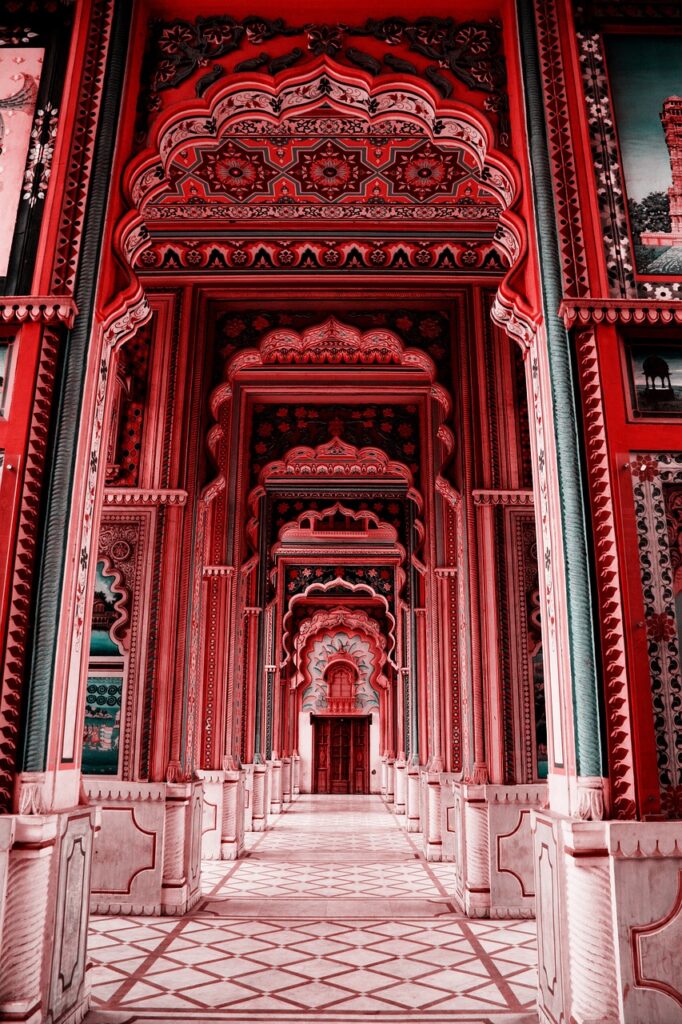
Rajasthan, aptly named the “Land of Kings,” is a vibrant state in northwestern India. It is the largest state by area in the country, encompassing diverse landscapes like the majestic Aravalli Range, the vast Thar Desert, and fertile plains. Rajasthan boasts a rich cultural and historical heritage that is evident in its magnificent forts, colorful traditions, and warm hospitality.
A Tapestry of Culture and History
Rajasthan’s history is intertwined with the Rajput clans, known for their valor and chivalry. This legacy lives on in the state’s numerous forts and palaces, each a testament to a bygone era. From the Hawa Mahal’s intricate facade in Jaipur to the Mehrangarh Fort’s imposing presence in Jodhpur, these architectural marvels whisper tales of past battles and royal grandeur.
Beyond its historical significance, Rajasthan is a land of vibrant culture. Folk music and dance like Ghoomar and Kalbeliya enthrall audiences, while festivals like Teej and Gangaur showcase the state’s colorful spirit. The bustling bazaars, adorned with colorful textiles and handcrafted souvenirs, offer a glimpse into the local way of life.
A Unique Geographical Location
Nestled in northwestern India, Rajasthan shares its borders with Pakistan to the west and other Indian states like Punjab, Haryana, and Madhya Pradesh. The Aravalli Range, running through the heart of the state, serves as a geographic and cultural divide, separating the fertile eastern plains from the arid western desert. The iconic Thar Desert, covering a large portion of western Rajasthan, is a mesmerizing landscape with its sand dunes, nomadic communities, and unique wildlife.
Rajasthan’s geographical location has shaped its history and culture. The Aravalli Range served as a natural barrier, protecting the region from invaders but also limiting trade and cultural exchange with other parts of India. The Thar Desert, though challenging to inhabit, became a haven for independent communities and fostered a culture of resilience and resourcefulness.
Historical Marvels: Forts and Palaces of Rajasthan (Rajasthan Tourism)
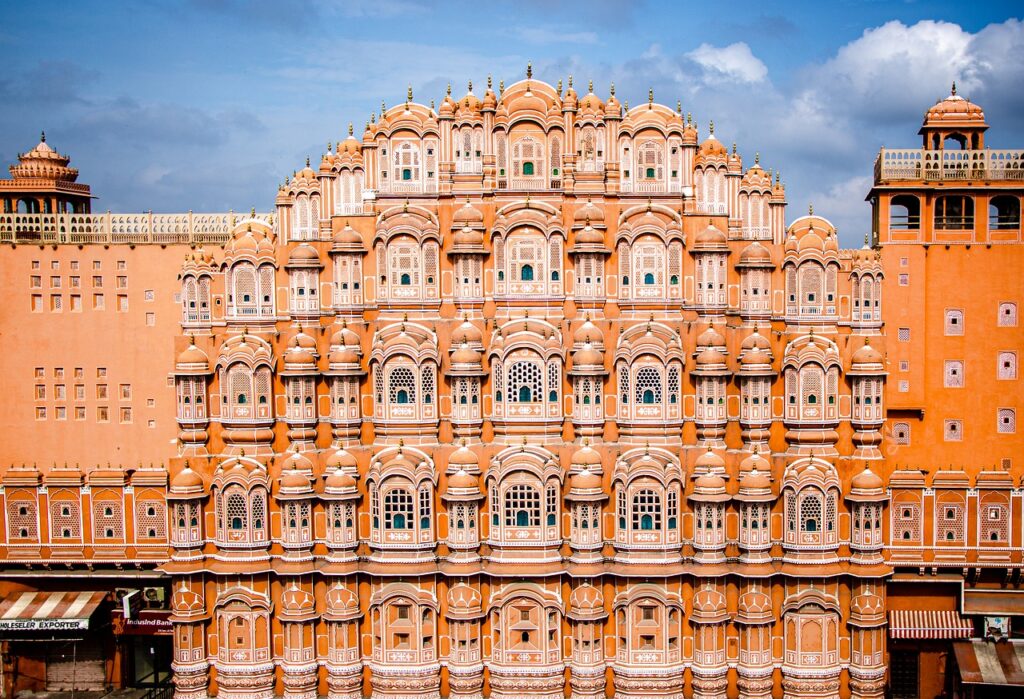
Rajasthan, the “Land of Kings,” is a treasure trove of historical marvels that transport visitors back to an era of chivalry and grandeur. Two prominent categories stand out: the majestic forts and the opulent palaces, each offering a glimpse into the state’s rich historical tapestry.
Majestic Forts: Guardians of the Past
Rajasthan’s forts are not just architectural marvels, but also silent sentinels that have witnessed centuries of battles, conquests, and triumphs. These formidable structures, often perched atop hills or strategically placed in plains, served as centers of power and defense for the Rajput kingdoms.
- Amber Fort (Jaipur): This magnificent fort, also known as the Amer Fort, offers a breathtaking blend of Rajput and Mughal architecture. Its sprawling complex, featuring courtyards, palaces, and halls, narrates tales of royal life and warfare.
- Mehrangarh Fort (Jodhpur): This imposing fort, situated on a rocky hill, dominates the Jodhpur skyline. Its formidable walls, intricate carvings, and palaces like the Moti Mahal (“Pearl Palace”) showcase the architectural brilliance and Rajput valor.
- Chittorgarh Fort (Chittorgarh): This UNESCO World Heritage Site is the largest fort in India and stands as a symbol of Rajput pride and sacrifice. Its numerous palaces, temples, and memorials hold stories of legendary battles and heroic deeds.
These are just a few examples, and Rajasthan boasts numerous other forts, each with its unique history and architectural style. Exploring these forts allows visitors to step back in time, imagining the battles fought, alliances forged, and lives lived within these formidable walls.
Palaces: A Glimpse into Royal Life
Rajasthan’s palaces are not just grand structures, but also windows into the lives of the Rajput royalty. These opulent dwellings, adorned with intricate carvings, murals, and courtyards, showcase the artistic finesse and luxurious lifestyle of the past.
- City Palace (Jaipur): This sprawling complex, located in the heart of Jaipur, is a blend of Mughal and Rajput architecture. Its numerous halls, courtyards, and museums provide a glimpse into the lives and tastes of the Jaipur royalty.
- City Palace (Udaipur): This majestic palace, situated on the banks of Lake Pichola, reflects the grandeur of the Mewar dynasty. Its intricate carvings, ornate balconies, and beautiful gardens paint a picture of royal opulence.
- Umaid Bhawan Palace (Jodhpur): This 20th-century palace, built in the Indo-Saracenic style, is one of the largest private residences in the world. Today, a part of the palace serves as a museum and heritage hotel, offering visitors a chance to experience firsthand the royal lifestyle.
Exploring these palaces allows visitors to understand the lives of the Rajput Maharajas, their artistic sensibilities, and their administrative prowess. The intricate details and luxurious settings transport visitors to a bygone era of royalty and grandeur.
Rajasthan’s historical marvels, from its majestic forts to its opulent palaces, offer a unique opportunity to delve into the state’s rich historical tapestry. These architectural wonders not only mesmerize with their beauty but also whisper stories of a glorious past, leaving an everlasting impression on every visitor.
Architectural Splendors: A Journey Through Stone and Craft (Rajasthan Tourism)
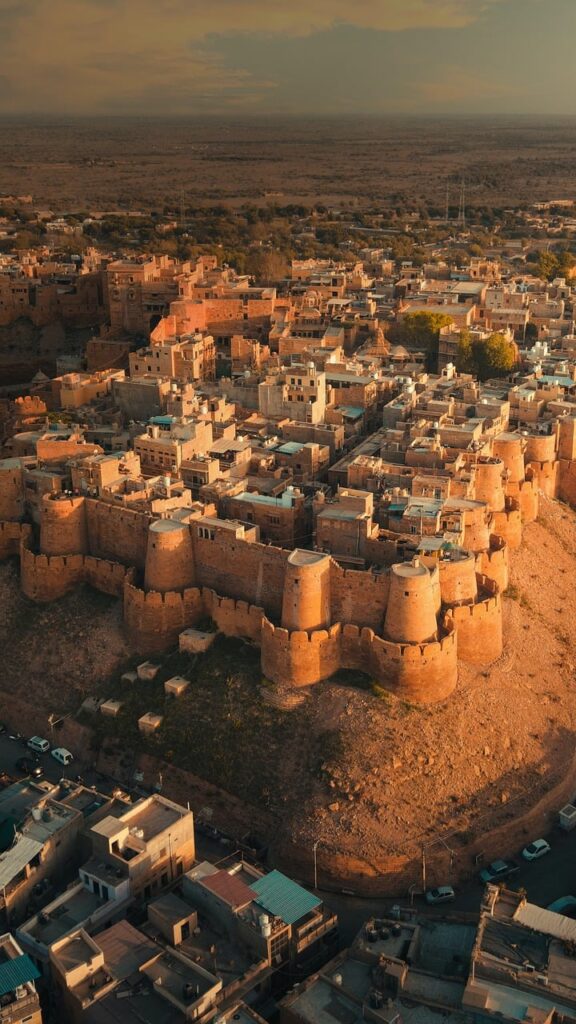
Rajasthan is not just a land of historical significance but also a haven for architectural marvels. From the intricate details of its forts and palaces to the serene elegance of its temples, the state showcases a diverse and awe-inspiring array of architectural styles. Let’s delve into two specific examples:
1. The Enchanting Hawa Mahal (Jaipur):
- A Palace of Breezes: Located in the heart of Jaipur, the Hawa Mahal (Palace of Winds) is a unique architectural marvel renowned for its intricate facade. The five-story structure boasts 953 small windows, or jharokhas, adorned with intricate latticework. These jharokhas served a dual purpose: allowing the royal women to observe street festivities while maintaining their privacy and providing natural air circulation within the palace, hence the name “Palace of Winds.”
- A Blend of Mughal and Rajput Influence: The Hawa Mahal’s architecture reflects a harmonious blend of Mughal and Rajput styles. The use of red and pink sandstone resonates with Mughal architecture, while the jharokha design and the emphasis on delicate ornamentation are distinctly Rajput influences.
- A Window into Royal Life: While not a conventional palace, the Hawa Mahal offers a glimpse into the lives of the royal women. The jharokhas allowed them to observe the world outside, participate in festivals indirectly, and stay connected with their subjects.
2. The Majesty of the Jain Temples in Ranakpur:
- A Symphony in Marble: Nestled amidst the Aravalli hills, the Jain Temples in Ranakpur are a testament to the exquisite artistry and intricate craftsmanship of the Jain community. Built entirely of white marble, the complex comprises four interconnected temples, each adorned with remarkable carvings and sculptures.
- A Celebration of Detail: The temples are a visual feast, showcasing intricate carvings on pillars, ceilings, and doorways. The “Thousand Pillar” temple, aptly named for its 1444 intricately carved pillars, is a masterpiece of architectural design. The attention to detail extends to the ceilings, adorned with intricate floral patterns and geometric designs.
- A Symbol of Jain Philosophy: The architecture of the temples reflects the core principles of Jainism. The use of marble symbolizes purity and non-violence, while the intricate carvings depict stories from Jain mythology and scriptures.
Exploring these architectural splendors provides a deeper understanding of Rajasthan’s cultural and artistic heritage. The meticulous craftsmanship, the unique blend of styles, and the symbolic representation leave a lasting impression on every visitor.
Desert Safari Adventures: Unveiling the Magic of the Thar (Rajasthan Tourism)
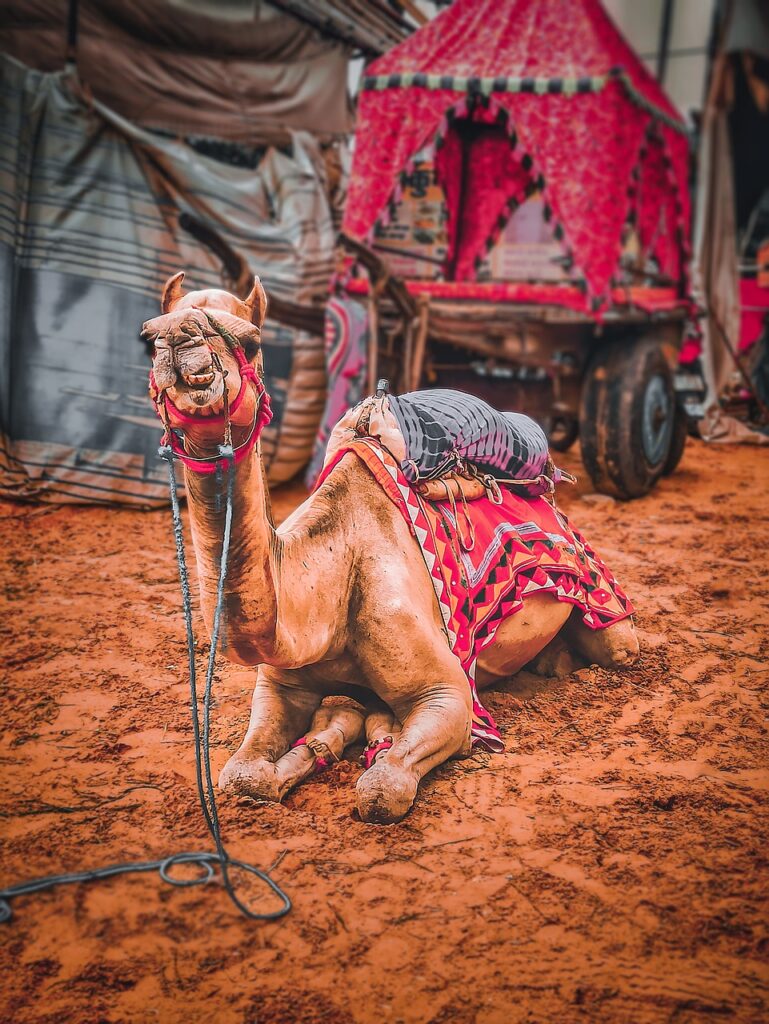
Rajasthan’s Thar Desert, a vast expanse of golden sand dunes, offers a unique and unforgettable experience for adventure seekers. Embarking on a desert safari is a quintessential way to discover the raw beauty, rich culture, and captivating serenity of this desert landscape.
Thrilling Exploration: Desert safaris come in various forms, allowing you to tailor the experience to your preferences. Explore the vast desert on a camel safari, a traditional and eco-friendly way to traverse the sand dunes. Feel the gentle sway of the camel as you journey deeper into the desert, soaking in the breathtaking panoramas and the serenity of the desert landscape.
Jeep safaris offer an adrenaline-pumping adventure as you navigate the undulating dunes, experiencing the thrill of the desert terrain. For a truly luxurious experience, opt for a desert camp stay. Immerse yourself in the desert charm under a star-studded sky, enjoying traditional cultural performances, delicious Rajasthani cuisine, and the warmth of desert hospitality.
Jaisalmer: The Golden City Beckons
Jaisalmer, aptly nicknamed the “Golden City,” is a popular gateway to the Thar Desert and a must-visit for any desert safari adventure. This enchanting city, built from golden sandstone, exudes a timeless charm with its majestic fort, vibrant bazaars, and rich cultural heritage.
Explore the magnificent Jaisalmer Fort, perched atop a hill and showcasing intricate Rajput architecture. Wander through the narrow lanes of the old city, brimming with colorful shops selling traditional handicrafts and textiles. Immerse yourself in the vibrant culture by attending a folk music and dance performance or witnessing a traditional camel caravan passing through the city.
Jaisalmer’s sand dunes offer the perfect setting for an unforgettable desert safari experience. Witness the mesmerizing beauty of the golden sands as they change hues with the setting sun, creating a breathtaking spectacle. Capture the essence of the desert in photographs, or simply lie back and marvel at the vastness of the star-studded night sky.
A desert safari in Rajasthan is not just an adventure; it’s a journey of discovery. It’s a chance to disconnect from the ordinary, reconnect with nature, and experience the unique charm and captivating beauty of the Thar Desert. So, pack your bags, embrace your sense of adventure, and embark on an unforgettable desert safari adventure in Rajasthan.
Cultural Extravaganza: A Celebration of Colors and Traditions (Rajasthan Tourism)

Rajasthan comes alive with vibrant colors and infectious energy during its numerous festivals. These celebrations are not just religious observances; they are a tapestry woven with music, dance, culinary delights, and a deep connection to the state’s rich cultural heritage. Let’s delve into two of the most captivating festivals:
1. The Enthralling Pushkar Fair:
- A Multifaceted Spectacle: Held annually in the holy town of Pushkar, the Pushkar Fair is a vibrant spectacle that attracts thousands of devotees, pilgrims, and travelers from around the world. Spanning over five days, the fair is a unique blend of religious ceremonies, lively cattle trading, and vibrant cultural performances.
- A Celebration of Faith and Tradition: The fair coincides with the Kartik Purnima, a sacred Hindu festival. Devotees take holy dips in the Pushkar Lake, believed to have been created by Lord Brahma. The fair also features vibrant processions, traditional aarti ceremonies, and religious chants that fill the air with a sense of devotion and serenity.
- A Cultural Kaleidoscope: Beyond the religious significance, the Pushkar Fair is a vibrant celebration of Rajasthani culture. Witness enthralling folk music and dance performances, explore the bustling bazaars overflowing with colorful handicrafts and textiles, and indulge in delectable Rajasthani cuisine.
2. The Enchanting Desert Festival:
- A Celebration in the Sands: Held in the heart of the Thar Desert, the Desert Festival is a vibrant celebration of the region’s unique culture and traditions. The festival takes place in Jaisalmer, the “Golden City,” and transforms the desert landscape into a stage for a spectacular display of art, music, and dance.
- A Journey Through Colors and Sounds: Witness the mesmerizing “Manganiyar Sangeet” performances by traditional folk singers, their soulful music echoing through the desert night. Immerse yourself in the rhythmic beats of the dhol and the graceful movements of the Ghoomar dance, a traditional dance form performed by women.
- A Feast for the Senses: The Desert Festival is also a culinary delight. Savor the rich flavors of Rajasthani cuisine, from spicy curries and savory dal to delectable sweets and refreshing beverages. Witness skilled artisans showcase their craft, creating intricate embroidery, beautiful pottery, and colorful paintings.
Rajasthan’s festivals are a window into the soul of the state, offering a glimpse into its rich cultural heritage, vibrant traditions, and warm hospitality. So, immerse yourself in the colors, sounds, and flavors of these celebrations, and create memories that will last a lifetime.
Wildlife Sanctuaries: Encountering the Enchantment of Nature (Rajasthan Tourism)

Rajasthan is not just a land of vibrant culture and historical marvels; it is also a haven for wildlife enthusiasts, boasting diverse wildlife sanctuaries and national parks. Here, we explore three prominent sanctuaries:
1. Ranthambore National Park: In Search of the Tiger King
Ranthambore National Park, nestled in the Aravalli Hills of southeastern Rajasthan, is a haven for wildlife enthusiasts and a globally renowned tiger reserve. This park, once a hunting ground for the Maharajas of Jaipur, is now a protected area teeming with diverse flora and fauna.
Spotting the Magnificent Tiger: Ranthambore’s star attraction is undoubtedly the majestic Royal Bengal Tiger. Embark on a thrilling jeep safari through the park’s diverse landscapes, ranging from dry deciduous forests to rocky cliffs and meandering streams, and keep your eyes peeled for these elusive creatures.
Beyond the Tiger: Ranthambore is not just about tigers. The park boasts a rich biodiversity, with over 300 species of birds, including Indian grey hornbill, peafowl, and crested serpent eagle. You can also spot a variety of mammals, including leopards, sloth bears, hyenas, and chitals.
2. Sariska Tiger Reserve: A Resurgence Story
Sariska Tiger Reserve, located in the Alwar district of Rajasthan, is a story of ecological restoration and conservation success. Once facing the threat of extinction, the tiger population in Sariska has seen a remarkable revival thanks to dedicated conservation efforts.
Exploring Diverse Landscapes: Sariska offers a diverse landscape, encompassing dry deciduous forests, rocky hills, and seasonal streams. This varied terrain provides habitat for a variety of wildlife, including tigers, leopards, jungle cats, four-horned antelopes, and striped hyenas.
A Rich Historical Tapestry: Beyond its wildlife significance, Sariska boasts a rich historical tapestry. The park is home to the Khajuraho Group of Monuments, a UNESCO World Heritage Site featuring ancient Hindu and Jain temples known for their intricate carvings.
3. Keoladeo National Park: A Birdwatcher’s Paradise
Keoladeo National Park, also known as the Bharatpur Bird Sanctuary, is a haven for birdwatchers and nature enthusiasts. Formerly a hunting ground for the Maharajas of Bharatpur, this wetland sanctuary is now a designated UNESCO World Heritage Site.
A Haven for Feathered Friends: Keoladeo National Park is home to over 360 species of birds, making it one of the richest bird sanctuaries in Asia. During the winter months, the park transforms into a spectacle of color and sound as migratory birds from Siberia and Central Asia flock here, including ducks, geese, cranes, pelicans, and eagles.
More Than Just Birds: While birds are the main attraction, Keoladeo National Park also provides habitat for a variety of mammals, including sambar deer, spotted deer, nilgai antelope, and monkeys.
A Glimpse into Nature’s Majesty:
Each of these wildlife sanctuaries offers a unique opportunity to witness the wonders of nature, encounter diverse flora and fauna, and appreciate the importance of conservation efforts. So, pack your binoculars, lace up your hiking boots, and embark on an unforgettable journey into the wild heart of Rajasthan.
Spiritual Retreats: Finding Inner Peace in Rajasthan (Rajasthan Tourism)
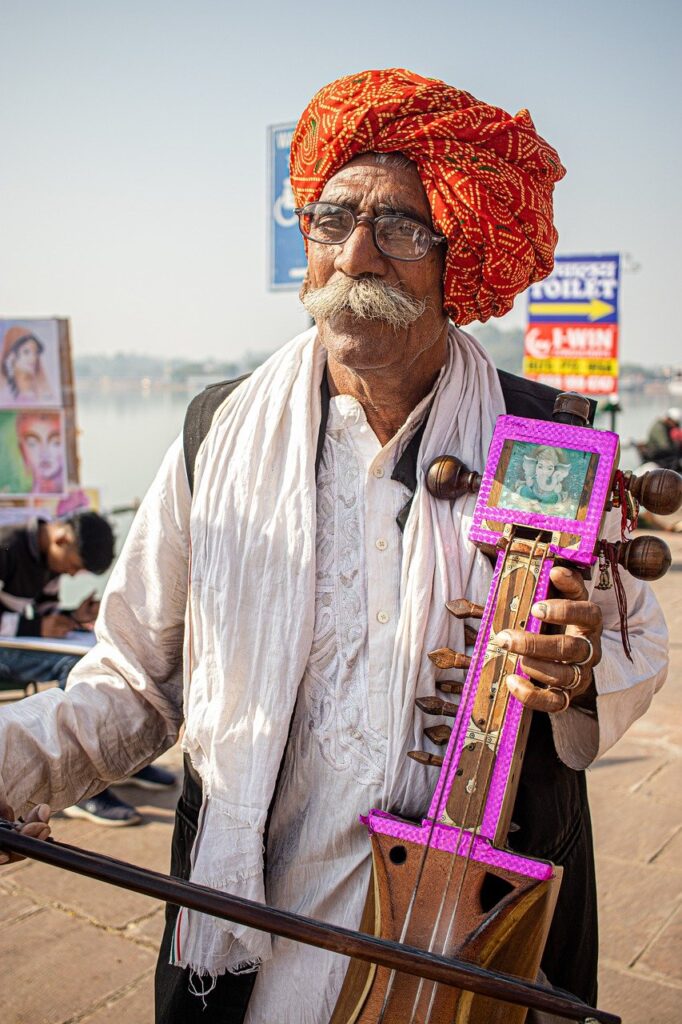
Rajasthan, beyond its vibrant culture and historical marvels, also offers a haven for spiritual seekers. The state boasts numerous pilgrimage sites and spiritual retreats that attract devotees and travelers seeking inner peace and connection. Let’s delve into two prominent destinations:
1. Pushkar: The Holy City
Pushkar, often referred to as the “Holy City,” is nestled on the shore of the Pushkar Lake and is a sacred pilgrimage site for Hindus. This charming town, believed to be one of the oldest continuously inhabited cities in the world, is renowned for its numerous temples, serene atmosphere, and rich spiritual significance.
The Abode of Lord Brahma: Pushkar’s most prominent landmark is the Jagatpita Brahma Mandir, also known as the Brahma Temple. This ancient temple, dedicated to Lord Brahma, the creator god in the Hindu trinity, is believed to be one of the very few temples dedicated to him in the world.
A Pilgrimage Destination: Pushkar draws thousands of devotees throughout the year, especially during the Pushkar Fair, a vibrant celebration that coincides with the Kartik Purnima (full moon in the Hindu month of Kartik). During this time, pilgrims take holy dips in the Pushkar Lake, believed to cleanse sins and bring good fortune.
2. Ajmer: Embracing Sufi Spirituality
Ajmer, a short distance from Pushkar, is another prominent spiritual destination known for its peaceful atmosphere and historical significance. The city is particularly renowned for the Ajmer Sharif Dargah, a shrine dedicated to the revered Sufi saint, Moinuddin Chishti.
A Beacon of Sufi Tradition: The Ajmer Sharif Dargah is a revered pilgrimage site for people of various faiths, not just Muslims. Visitors come to the dargah to seek blessings, offer prayers, and experience the serenity of the spiritual environment.
Exploring Sufi Traditions: The dargah complex also houses several other religious structures, including a mosque, a tomb, and a langar (community kitchen). Exploring these spaces allows visitors to gain insights into Sufi traditions and the significance of the dargah in the region.
City Exploration: Unveiling the Enchantment of Rajasthan’s Gems (Rajasthan Tourism)
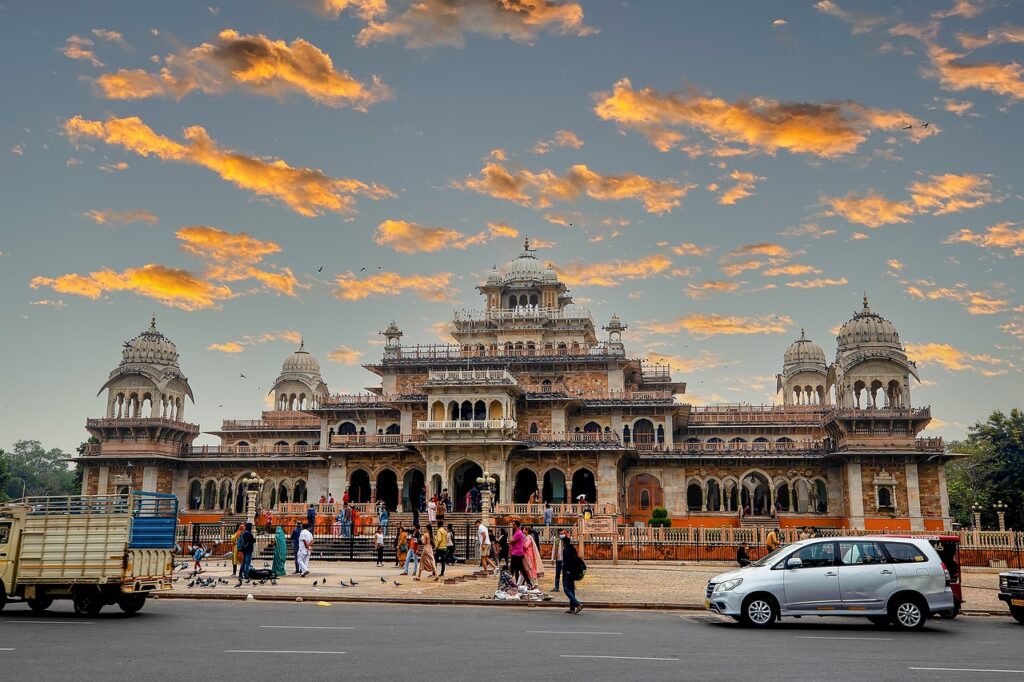
Rajasthan is a tapestry woven with vibrant cities, each boasting its unique character and charm. Let’s embark on a journey to explore three of its most captivating destinations:
1. Jaipur: The Pink City
Jaipur, also known as the Pink City, is the capital of Rajasthan and a popular tourist destination. The city gets its nickname from the characteristic color of its buildings, painted a warm pink shade in the 18th century to welcome Prince Edward.
Iconic Landmarks: Jaipur is a treasure trove of historical landmarks and architectural marvels. Explore the majestic Amer Fort, perched atop a hill, or wander through the intricate corridors of the City Palace, once the royal residence of the Jaipur Maharajas. Witness the grandeur of the Hawa Mahal (Palace of Winds), adorned with intricate latticework, or capture a photo at the iconic Hawa Mahal facade.
Beyond the Monuments: Jaipur is not just about historical sites. Immerse yourself in the vibrant culture by exploring the bustling bazaars of Johari Bazaar, a shopper’s paradise for textiles, jewelry, and handicrafts. Savor the flavors of Rajasthani cuisine, from spicy curries to melt-in-your-mouth sweets.
2. Udaipur: The City of Lakes
Udaipur, also known as the City of Lakes, is a romantic haven nestled amidst the Aravalli Hills. This picturesque city is renowned for its serene lakes, majestic palaces, and captivating beauty.
Lake Palaces and Island Delights: Take a boat ride on the Lake Pichola, the city’s crown jewel, and marvel at the majestic Lake Palace, an island palace that served as a royal summer retreat. Explore the Jag Mandir, another island palace on Lake Pichola, known for its beautiful gardens and serene atmosphere.
Wandering Through History: Visit the City Palace, a sprawling complex showcasing Rajput architecture and offering a glimpse into the royal life of Mewar. Immerse yourself in the rich tapestry of Udaipur’s history at the Udaipur City Museum, housing a collection of artifacts, weapons, and royal memorabilia.
3. Jodhpur: The Blue City
Jodhpur, also known as the Blue City, is a visual spectacle painted in various shades of blue. The city derives its name from the traditional practice of Brahmin families painting their houses blue to denote the presence of Lord Shiva.
Majestic Mehrangarh Fort: Dominating the Jodhpur skyline is the Mehrangarh Fort, a formidable structure offering breathtaking views of the city. Explore the fort’s palaces, museums, and courtyards, and learn about the region’s rich history and Rajput valor.
Exploring Jodhpur’s Charm: Wander through the narrow lanes of the old city, marvelling at the blue-hued houses and vibrant bazaars. Visit the Jaswant Thada, a white marble cenotaph built in memory of Maharaja Jaswant Singh II, and admire its intricate carvings and architectural beauty.
A Journey Through Time and Beauty:
Shopping in Rajasthan (Rajasthan Tourism)

Shopping in Rajasthan is a delightful experience, offering a vibrant array of traditional handicrafts, textiles, and jewelry that reflect the state’s rich heritage and artistry. From intricate embroidered fabrics to exquisite silver jewelry, Rajasthan’s bazaars are a treasure trove for souvenir hunters and art enthusiasts alike.
Must-Buy Items in Rajasthan:
- Handicrafts: Rajasthan is renowned for its exquisite handicrafts, each region specializing in unique styles and techniques. Look for wooden carved items, lacquerware, miniature paintings, marble inlay work, and textile crafts like bandhani (tie-and-dye) and ** leheriya** (wavy patterns).
- Textiles: Rajasthan’s textiles are a visual treat, showcasing vibrant colors, intricate designs, and traditional weaving techniques. Popular textile options include sarees, lehengas, shawls, and dhotis, all adorned with beautiful embroidery or mirror work.
- Jewelry: Rajasthan boasts a rich tradition of jewelry making, with each region known for its distinct style. Look for kundan jewelry, featuring intricate gemstone settings, meenakari jewelry, adorned with colorful enamel work, lac jewelry, made from brightly lacquered wood, and silver jewelry, known for its intricate designs and affordability.
Famous Bazaars and Markets:
- Jaipur: Explore the bustling bazaars of Jaipur, like Johari Bazaar, Tripolia Bazaar, and Bapu Bazaar, for a diverse range of handicrafts, textiles, jewelry, and souvenirs.
- Jodhpur: Immerse yourself in the vibrant atmosphere of Jodhpur’s Sardar Bazaar and Nai Sarak, known for their textiles, leather goods, and traditional Rajasthani footwear called juttis.
Tips for Shopping in Rajasthan:
- Bargaining: Bargaining is an integral part of the shopping experience in Rajasthan. Be polite and respectful, and enjoy the process of negotiating a fair price.
- Authenticity: Look for shops with a good reputation and ask about the origin and materials used in the products.
- Fixed-price shops: While many shops allow bargaining, some have fixed prices. Respect their pricing and avoid haggling.
- Carry cash: While some shops accept cards, it’s advisable to carry cash for smaller purchases and street vendors.
Heritage Hotels
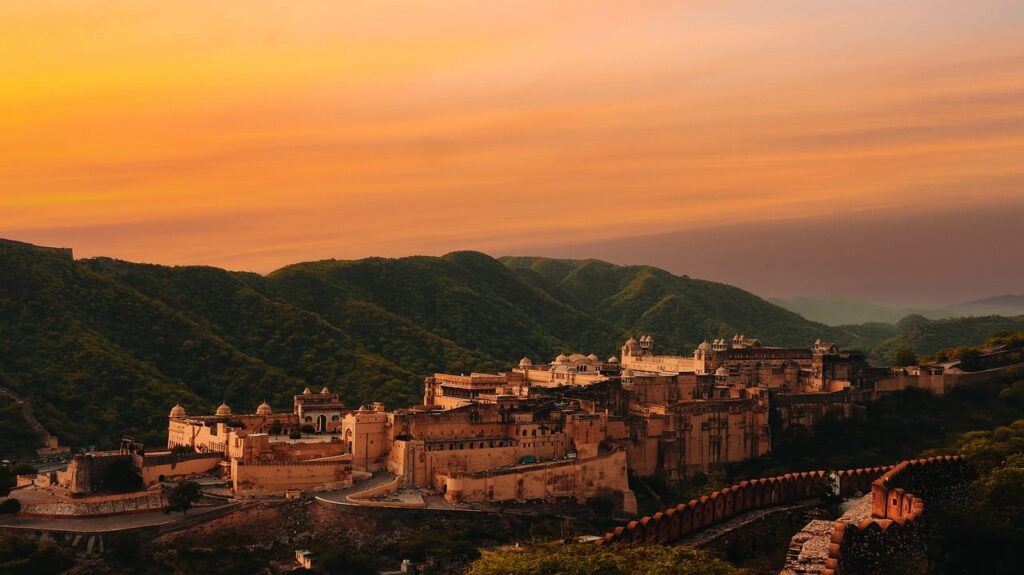
Staying in a heritage hotel in Rajasthan is an experience unlike any other. These meticulously restored palaces, forts, and havelis (traditional mansions) offer guests a chance to step back in time and experience the grandeur and opulence of a bygone era.
Here are some of the most popular heritage hotels in Rajasthan:
- Rambagh Palace, Jaipur: This iconic palace, once the residence of the Maharaja of Jaipur, is now a luxurious Taj hotel. Guests can stay in opulent rooms and suites, dine in regal settings, and enjoy world-class amenities.
- Taj Lake Palace, Udaipur: This breathtaking palace, built on an island in the middle of Lake Pichola, is considered one of the most romantic hotels in the world. Guests can enjoy stunning views of the lake and the city, indulge in luxurious spa treatments, and experience unparalleled personalized service.
- Umaid Bhawan Palace, Jodhpur: This magnificent palace, built in the early 20th century, is one of the largest private residences in the world. A part of the palace has been converted into a luxurious hotel, offering guests a chance to experience the grandeur of royal life.
- Neemrana Fort Palace, Alwar: This 16th-century fort, perched atop a hill, offers stunning views of the surrounding Aravalli Hills. The fort has been converted into a charming heritage hotel, with rooms decorated in traditional Rajasthani style.
- Samode Palace, Jaipur: This 19th-century palace, located on the outskirts of Jaipur, offers a luxurious and serene escape. Guests can enjoy the palace’s beautiful gardens, swimming pool, and spa, and participate in cultural activities like cooking demonstrations and traditional dance performances.
Staying in a heritage hotel is not just about the luxurious accommodations. It’s also about experiencing the unique culture and heritage of Rajasthan. Many of these hotels offer guests a variety of activities and experiences, such as:
- Cultural performances: Enjoy traditional Rajasthani folk music and dance performances.
- Cooking demonstrations: Learn how to cook traditional Rajasthani dishes.
- Village visits: Visit a local village and learn about the lives of the people who live there.
- Nature walks: Explore the beautiful Aravalli Hills or the Thar Desert.
Reaching Rajasthan: Gateways to the Land of Kings
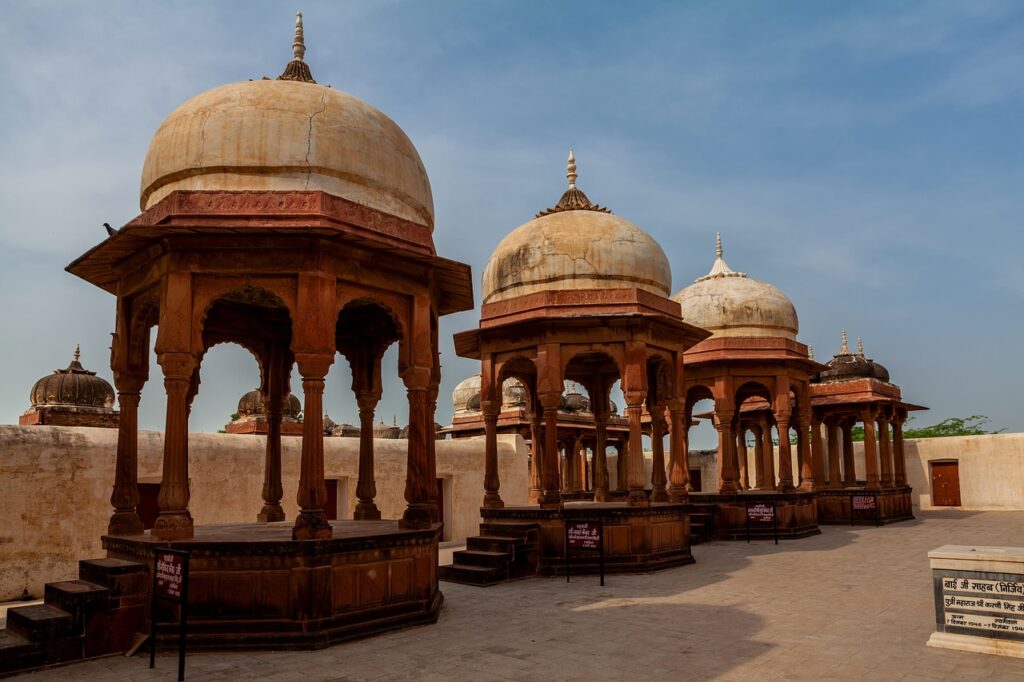
Rajasthan, with its vibrant culture, historical marvels, and diverse landscapes, is a popular tourist destination in India. Here’s how you can reach this incredible state:
By Air:
- Jaipur International Airport (JAI): This is the largest airport in Rajasthan and well connected to major cities in India and abroad. It serves as the primary gateway for reaching Jaipur, the capital city, and other nearby destinations.
- Udaipur Airport (UDR): This airport is located in the heart of Udaipur, also known as the City of Lakes. It is well connected to major Indian cities and offers convenient access to Udaipur and surrounding areas.
- Jodhpur Airport (JDH): This airport serves Jodhpur, the Blue City, and is connected to several Indian cities.
By Train:
Rajasthan boasts a well-established railway network, connecting major cities and towns within the state to other parts of India. Here are some prominent railway junctions:
- Jaipur Junction (JP): This is the main railway station in Jaipur and connects the city to various destinations across India.
- Jodhpur Junction (JU): This station serves Jodhpur and offers train connections to numerous Indian cities.
- Udaipur City Station (UDR): This station connects Udaipur to other Indian cities and towns.
By Road:
Rajasthan has a well-maintained network of national highways and state roads, making it accessible by road from other parts of India. You can either take a public bus or rent a car to explore the state at your own pace.
Exploring Rajasthan: Diverse Landscapes and Navigation Tips

Rajasthan boasts diverse landscapes, from the majestic Aravalli Hills and the vast Thar Desert to fertile plains and serene lakes. Here are some tips for navigating through these diverse terrains:
- Jaipur and nearby areas: The best way to explore Jaipur city is by auto rickshaw or taxi. For venturing out to nearby destinations like Amber Fort or Hawa Mahal, you can hire a cab or use ride-hailing services like Uber or Ola.
- Udaipur and the lake region: Exploring Udaipur’s city center is best done on foot or by bicycle. To reach destinations around the lakes, you can hire a taxi, take a boat ride, or rent a self-drive car if you possess a valid international driving license.
- Jodhpur and the Thar Desert: Taxis and auto rickshaws are readily available for exploring Jodhpur city. Exploring the Thar Desert requires special arrangements, and joining a guided desert safari tour is the recommended option. These tours typically include transportation, accommodation, and activities like camel rides and jeep safaris.
- General tips: When traveling by road, be aware of traffic conditions, especially on highways during peak seasons. Download offline maps or utilize GPS navigation apps to aid your journey.
Safety and Travel Tips for a Memorable Rajasthan Experience (Rajasthan Tourism)
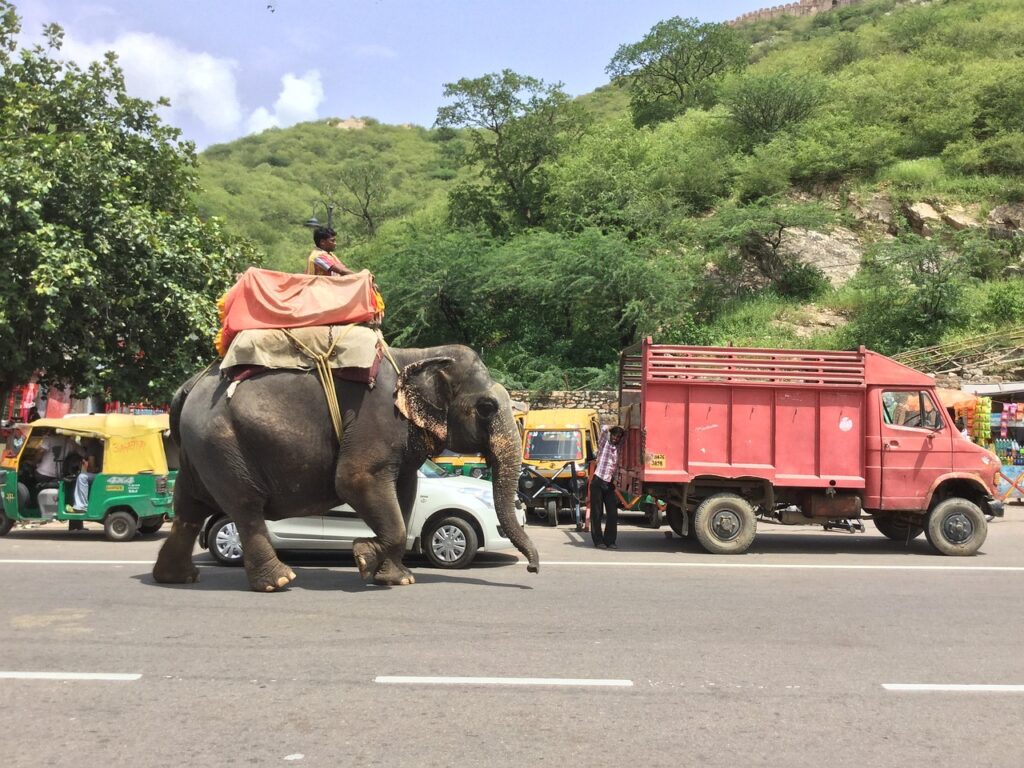
Safety First:
While Rajasthan is generally safe for tourists, practicing caution and being aware of your surroundings is essential. Here are some safety tips to keep in mind:
- Be cautious with your belongings: Keep your valuables close, avoid carrying large sums of cash, and be mindful of your surroundings in crowded areas.
- Respect local customs and dress modestly, especially when visiting religious sites. Women may feel more comfortable covering their shoulders and knees in certain areas.
- Stay hydrated, especially during the hot summer months. Carry a reusable water bottle and avoid drinking from unknown sources.
- Be aware of traffic regulations and exercise caution when crossing roads. Use designated pedestrian crossings whenever possible.
- Choose registered and reputable transportation services, especially if traveling by taxi or rickshaw.
- Inform your hotel or a trusted friend about your travel plans, especially if venturing to remote areas.
- Familiarize yourself with emergency numbers for police (100), ambulance (102), and fire services (101).
Cultural Etiquette:
Respecting local customs and traditions is crucial for a smooth and enjoyable travel experience. Here are some basic points to remember:
- Greet locals with a respectful “Namaste” (pronounced nah-mah-stay), a traditional Indian greeting with a slight bow.
- Remove footwear before entering temples and mosques.
- Seek permission before taking photographs of people, especially women and religious figures.
- Bargaining is common in markets, but be polite and respectful during negotiations.
- Tipping is not mandatory, but a small gratuity is appreciated for good service in restaurants and hotels.
Responsible Tourism:
Being a responsible tourist involves minimizing your negative impact on the environment and local communities. Here are some practices to consider:
- Minimize your waste and dispose of it responsibly. Carry a reusable water bottle and shopping bag whenever possible.
- Support local businesses and artisans by purchasing souvenirs and local products.
- Respect the local wildlife and environment. Avoid littering in national parks and protected areas.
- Dress modestly when visiting religious sites and be mindful of noise levels.
- Be respectful of local customs and traditions, and avoid engaging in activities that could be considered offensive.
Rajasthan: Where History Whispers and Culture Dances (Rajasthan Tourism)
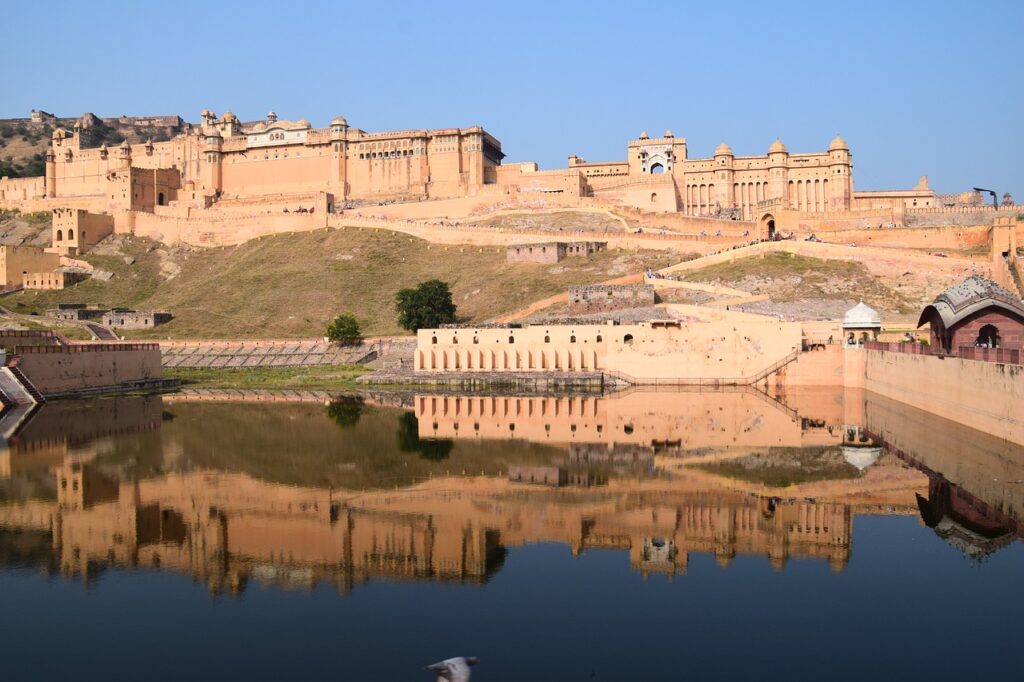
Rajasthan is a tapestry woven with vibrant threads of history, culture, and breathtaking natural beauty. It’s a land where majestic forts whisper tales of ancient battles, bustling bazaars overflow with colorful crafts, and serene lakes reflect the grandeur of opulent palaces.
A Journey Through Time:
- Immerse yourself in the rich tapestry of history, from the formidable Mehrangarh Fort in Jodhpur to the majestic Amber Fort overlooking Jaipur.
- Explore the architectural marvels, like the Hawa Mahal’s intricate facade in Jaipur or the City Palace, a testament to Udaipur’s royal heritage.
A Celebration of Culture:
- Witness the vibrant colors and infectious energy of festivals like the Pushkar Fair or the Desert Festival, a kaleidoscope of music, dance, and cultural performances.
- Lose yourself in the rhythmic beats of the dhol and the graceful movements of the Ghoomar dance, a captivating expression of Rajasthani culture.
- Savor the diverse flavors of Rajasthani cuisine, from the fiery curries of Marwar to the melt-in-your-mouth sweets of Mewar.
Embracing Nature’s Enchantment:
- Seek solace in the tranquil beauty of the Aravalli Hills or embark on a thrilling jeep safari through the vast Thar Desert, encountering diverse wildlife.
- Witness the breathtaking spectacle of migratory birds at Keoladeo National Park or spot majestic tigers roaming free in Ranthambore National Park.
- Take a serene boat ride on Lake Pichola in Udaipur, admiring the majestic Lake Palace and the captivating city skyline.
An Invitation to Explore:
Rajasthan is more than just a tourist destination; it’s an experience that lingers in the heart. So, pack your bags, embrace the spirit of adventure, and embark on your own unforgettable journey through the timeless allure of Rajasthan. Let its vibrant culture, captivating history, and stunning landscapes paint memories that will last a lifetime.
FAQs Based on Rajasthan Tourism
What is the best time to visit Rajasthan?
The best time to visit Rajasthan is generally during the cooler months, from October to March, when the temperatures are pleasant. However, if you prefer to avoid crowds, shoulder seasons (April-May and September-October) can also be good options.
What are the main languages spoken in Rajasthan?
Hindi is the official language of Rajasthan, but English is also widely spoken in tourist areas. Other languages spoken in the state include Rajasthani, Marwari, and Mewari.
What is the currency used in Rajasthan ?
The Indian Rupee (INR) is the official currency used in Rajasthan.
Do I need a visa to visit Rajasthan?
Visa requirements for visiting India, including Rajasthan, depend on your nationality. It is recommended to check with the nearest Indian embassy or consulate for the latest visa information.
Is Rajasthan safe for tourists?
Rajasthan is generally safe for tourists, but as with any travel destination, it is important to exercise common sense and be aware of your surroundings.
What are the most popular tourist destinations in Rajasthan?
Some of the most popular tourist destinations in Rajasthan include Jaipur (the Pink City), Jodhpur (the Blue City), Udaipur (the City of Lakes), Pushkar (known for its holy lake and camel fair), Jaisalmer (gateway to the Thar Desert), Ranthambore National Park (known for its tiger population), and Keoladeo National Park (a birdwatcher’s paradise).
What are the must-see sights in Jaipur?
Some of the must-see sights in Jaipur include the Hawa Mahal (Palace of Winds), Amber Fort, City Palace, Jantar Mantar (astronomical observatory), Nahargarh Fort, Jaigarh Fort, and Albert Hall Museum.
What are the must-see sights in Jodhpur?
Some of the must-see sights in Jodhpur include Mehrangarh Fort, Umaid Bhawan Palace, Jaswant Thada (marble memorial), Rao Jodha Desert Rock Park, and the bustling bazaars like Sardar Bazaar and Nai Sarak.
What are the must-see sights in Udaipur?
Some of the must-see sights in Udaipur include City Palace, Lake Pichola (boat ride), Jag Mandir (island palace), Jagdish Temple, Monsoon Palace, Saheliyon Ki Bari (Garden of Maids of Honor), and the vibrant folk performances.
What are some off-the-beaten-track destinations in Rajasthan?
Some off-the-beaten-track destinations in Rajasthan include Bundi (known for its stepwells and palaces), Bikaner (known for its forts and desert landscapes), Mandawa (known for its painted havelis), Chittorgarh (known for its historic fort), and Jaisalmer Fort (golden desert fort city).
What are some popular festivals in Rajasthan?
Some popular festivals in Rajasthan include the Pushkar Fair (camel fair and religious pilgrimage), Desert Festival (celebration of desert culture), Teej Festival (monsoon festival), Gangaur Festival (celebration of spring), and Diwali (festival of lights).
What are some traditional Rajasthani dishes I should try?
Some popular Rajasthani dishes include Dal Baati Churma (lentil curry, fried wheat balls, and crumbled flatbread), Laal Maas (mutton curry), Gatte Ki Sabzi (gram flour dumplings in curry), Ghewar (sweet fried disc), and Peda (sweet milk fudge).
What are some traditional souvenirs I can buy in Rajasthan?
Some popular souvenirs from Rajasthan include textiles (bandhani, leheriya, sarees), handicrafts (marble inlay work, wooden carvings, lacquerware), jewelry (kundan, meenakari, lac), and miniature paintings.
What are some cultural experiences I can have in Rajasthan?
You can experience cultural performances like folk dances (Ghoomar, Kalbeliya), attend cooking demonstrations, visit local villages, take a camel safari in the Thar Desert, witness aarti (prayer ceremony) at temples, and participate in a traditional Rajasthani wedding (with permission).
What are the different types of accommodation available in Rajasthan?
Rajasthan offers a variety of accommodation options, from budget-friendly guesthouses and homestays to luxurious heritage hotels and palaces.
